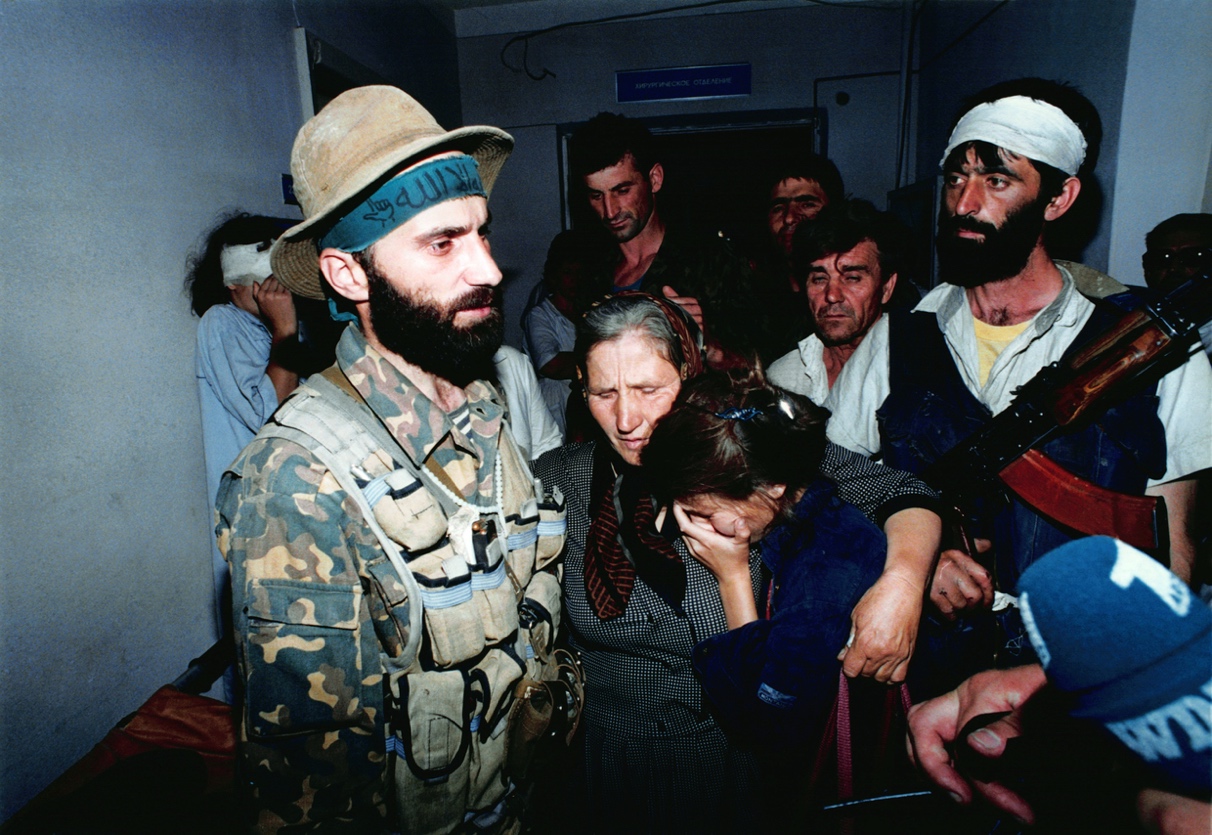
Part I in a two-part series
In December, the rapid fall of the Syrian government to Western-backed jihadists stunned the world and sparked a wide range of reactions amid the fallout. Unsurprisingly, the collective West was quick to celebrate the overthrow of Bashar al-Assad, a long-time U.S. foreign policy objective billions of dollars in the making. More unexpected were the public comments made by Russian President Vladimir Putin, who dismissed the notion that Assad’s ouster represented a strategic defeat for Moscow.
To the contrary, Putin insisted Russia had achieved its goal in Syria of preventing the creation of a “terrorist enclave similar to what we’ve seen in Afghanistan,” citing the cosmetically rebranded character of the al-Qaeda-affiliated Hayat Tahrir al-Sham (HTS) militants who seized power in Damascus. The Saudi-born leader of HTS, Ahmed al-Sharaa—who until recently had a $10 million bounty on his head offered by the U.S. State Department—even dropped his nom de guerre (Abu Mohammad al-Julani) after dissolving the Syrian constitution and appointing himself president.
Now sporting a blazer instead of fatigues and a turban, Sharaa still required a female CNN news anchor to wear hijab for an interview and refused to shake hands with German Foreign Minister Annalena Baerbock during a state visit. Was Putin’s wishful thinking serious, or was he trying to save face? The Russian parliament recently passed a law allowing the reversal of bans on listed terror groups which would enable Moscow to normalize relations with both the Afghan Taliban and Syria’s new regime.
While the extent to which the so-called “moderate rebels” in Syria have tempered their extremism is highly questionable (as the recent mass killings of Alawites and Christians attest), Putin was speaking from experience. Just a thousand miles from Sochi, one of the primary motivations for the Russian intervention beginning in 2015 was the legitimate security risk of Syria becoming a hotbed of terrorism that could reignite Chechen separatism in the Caucasus.
Unlike his predecessor Boris Yeltsin, Putin resolved the secessionist conflict in southern Russia by reaching a political compromise with the nationalist wing of the insurgency at the exclusion of the extremist faction led by warlord Shamil Basayev seeking to establish an Islamic state. In fact, among those encouraging Putin to remove Syria’s HTS as a designated terrorist organization is current Head of the Chechen Republic, Ramzan Kadyrov.
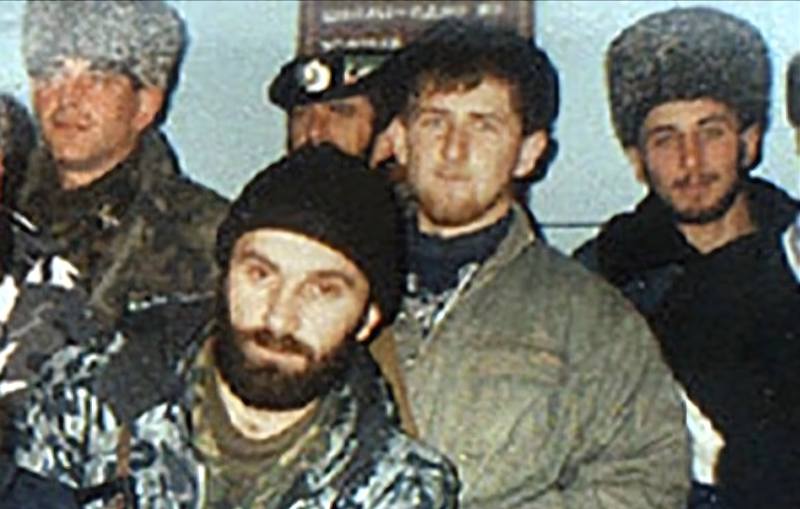
A mixed martial arts enthusiast and social media star, Kadyrov himself was part of the Chechen independence movement along with his father, the chief mufti Akhmad Kadyrov, before they defected back to the Russian side as the uprising grew fanatical.
Historically, Chechens are practitioners of moderate Sufism, a mystical form of Islam, not Wahhabism. In 2004, Islamists assassinated the elder Kadyrov in Grozny’s Dynamo Stadium by detonating an explosive underneath his VIP seating section during annual Victory Day celebrations in the Chechen capital. His son succeeded him as ruler a few years later. Ever since, the younger Kadyrov has been a strong Putin loyalist, with pro-Russian Chechen forces playing a key role fighting on the Ukraine front. Meanwhile, the Chechen Republic has been accused of numerous human rights violations under the strongman, including the wildly exaggerated claim the enclave was interning gay men in concentration camps.
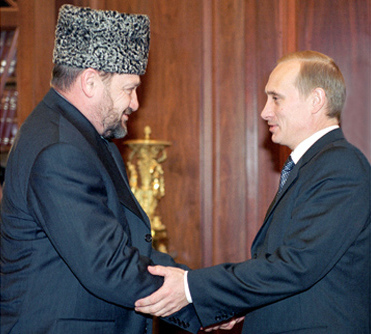
Despite the stability brought to the republic under the Kadyrovs, Salafist radicalization remains a threat in the Caucasus. When ISIS tried to establish a provincial branch within the mountain range, it was swiftly crushed. However, as early as 2011, there was mention of Chechen mujahideen (“holy warriors”) among the many foreign mercenaries and jihad tourists imported into Syria to join the opposition. As Director of National Intelligence Tulsi Gabbard recently reminded the Senate Intelligence Committee during her contentious confirmation hearing, the CIA sponsored radical Islamist paramilitary groups in Syria as part of its Operation Timber Sycamore program.
Gabbard cited an infamous quote from Jake Sullivan, then VP Joe Biden’s National Security adviser, privately admitting to then-Secretary of State Hillary Clinton in a 2012 email published by WikiLeaks, “AQ [al-Qaeda] is on our side in Syria.” The Obama administration had already supplied arms to Libyan “rebels” to depose Muammar Gaddafi which they claimed “fell into” the possession of al-Qaeda-linked militias like the Libyan Islamic Fighting Group, but the agenda was clear. In an article for The New Yorker called “The Redirection,” legendary journalist Seymour Hersh reported that, going back to 2005, the U.S. had reversed course from trying to eliminate al-Qaeda after 9/11 to supporting violent Sunni factions in Syria to undermine Assad.
It is also accepted that, in previous decades, the Clinton administration armed and funded the Bosnian mujahideen, as well as the Kosovo Liberation Army (KLA), a de-listed terrorist organization with connections to al-Qaeda and narco-trafficking, during the Yugoslav Wars in the 1990s. Two of the alleged 9/11 hijackers who were said to have crashed American Airlines Flight 77 into the Pentagon, Khalid al-Mihdhar and Nawaf al-Hazmi, were among the many foreign Islamist volunteers who fought in Bosnia. In 2023, a bombshell court filing from the Guantánamo Military Commission confirmed that the two Saudi Arabian hijackers were CIA assets recruited in a joint black operation with Saudi intelligence. Langley, of course, neglected to notify the FBI of this information or add either al-Qaeda member to terror watchlists upon their entry into the United States.

The two spy agencies also somehow failed to coordinate, despite a Saudi intelligence officer named Omar al-Bayoumi helping the two militants find a San Diego apartment to rent from a man who just so happened to be a long-time FBI informant. When Bayoumi was arrested by British authorities two weeks after 9/11 at his residence in Birmingham, England, Scotland Yard even found a video shot by the Saudi agent casing out the U.S. Capitol building in Washington, D.C., the likely intended target of United Airlines Flight 93 which crashed in Pennsylvania.
Was the revelation that the CIA may have facilitated the attacks so shocking, or merely validation of the public’s worst suspicions about 9/11? After all, it did follow historical precedent. As is well known, both the Taliban and al-Qaeda leadership, including Osama bin Laden himself, originally coalesced from the Afghan mujahideen which received money and weapons from the agency’s Operation Cyclone program throughout the Afghan-Soviet war in the 1980s.

There was also an overlooked connection to Chechnya. During the trial of the so-called “20th hijacker,” Zacarias Moussaoui, it was revealed that the French-born Moroccan had recruited other Islamic radicals to fight for Ibn al-Khattab, a Saudi warlord operating in Chechnya. A close confidante of Osama bin Laden and Shamil Basayev alike, Khattab had fought in tandem with OBL in Afghanistan and the Chechen emir in the Nagorno-Karabakh conflict. A declassified 1998 Defense Intelligence Agency (DIA) report admits, “Khattab appeared in Chechnya to carry out a special mission assigned to him by Osama bin Laden to organize training camps for international terrorists.”
Less than a month before the September 11 attacks, Moussaoui was arrested for an immigration violation in Minneapolis where he took flying lessons prior to his visa expiration. The Minnesota FBI agent who apprehended Moussaoui in August 2001 received word from French intelligence that the suspicious student pilot was connected to Khattab and that the pan-Islamist mercenary was part of Bin Laden’s network. In the weeks approaching 9/11, a memo was circulated to outgoing FBI Director Louis Freeh and several senior counterterrorism officials warning them about the would-be skyjacker, but no one at the Department of Justice (DOJ) took the threat seriously enough to issue a FISA (Foreign Intelligence Surveillance Act) warrant. Had they bothered to follow up on the tip, the other al-Qaeda sleeper cells would likely have been detected.
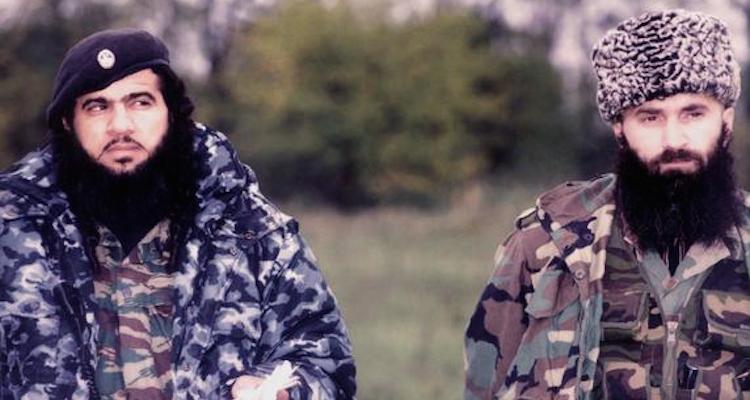
The 9/11 Commission Report summarized the fiasco:
“On August 22nd and 27th, the French provided information that made a connection between Moussaoui and a rebel leader in Chechnya, Ibn al-Khattab. This set off a spirited debate between the Minneapolis Field Office, FBI headquarters, and the CIA as to whether the Chechen rebels and Khattab were sufficiently associated with a terrorist organization to constitute a ‘foreign power’ for purposes of the FISA statute. FBI headquarters did not believe this was good enough, and its National Security Law Unit declined to submit a FISA application.”
In 2002, former FBI special agent and whistleblower Coleen Rowley testified to the Senate Judiciary Committee and 9/11 Commission regarding the extent of the bureau’s negligence and obstruction in the Moussaoui investigation. Not only did U.S. intelligence agencies sabotage multiple opportunities to prevent 9/11, but they were aware of the links between al-Qaeda and Chechen separatism. Putin was reportedly the first world leader to call U.S. President George W. Bush the day after September 11 to express his condolences, and naively thought it was an opportunity to forge a partnership against terror. Just two days earlier, the Russian president had phoned to forewarn his American counterpart that he sensed the assassination of Ahmad Shah Massoud, the leader of the Northern Alliance in Afghanistan, portended a wider terrorist campaign.
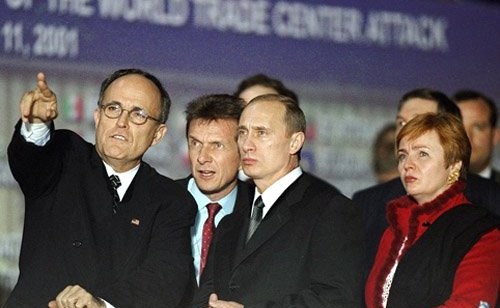
The post-9/11 cooperation between the U.S. and Russia proved to be short-lived once it became clear that Washington did not wish to make common cause with Moscow. By the time of his televised address to the Russian people in the aftermath of the 2004 Beslan school massacre, Putin made thinly veiled insinuations that he believed foreign powers were backing the jihadists but refrained from mentioning the United States by name. When bilateral relations turned for the worse, he finally called out the U.S. and reiterated the claim in his series of documentary interviews with Hollywood filmmaker Oliver Stone.
When the American director brought up the history of U.S. support for the Afghan mujahideen against the Soviets, Putin responded they had done the same in Chechnya and even confronted Bush about the matter. Stone pointed out the “contradictory behavior” of the U.S. simultaneously launching a War on Terror, to which Putin answered, “we have gotten used to these contradictions.”
When the Russian president told Stone that the Chechens were supported openly by the U.S., he was not exaggerating. It has always been acknowledged that the D.C. foreign policy elite advocated for the ostensibly nationalist branch of the separatist cause through a constellation of civil society groups and non-governmental organizations (NGOs), foremost among them the American Committee for Peace in Chechnya (ACPC). Chaired by Zbigniew Brzezinski, the National Security Adviser to Jimmy Carter who launched Operation Cyclone, ACPC featured a who’s who list of neo-conservatives, including former Director of Central Intelligence R. James Woolsey, Iraq War architect Richard Perle, William Kristol of The Weekly Standard, his fellow Project for the New American Century (PNAC) co-founder Robert Kagan, and convicted Iran-Contra conspirator Elliott Abrams, among others.
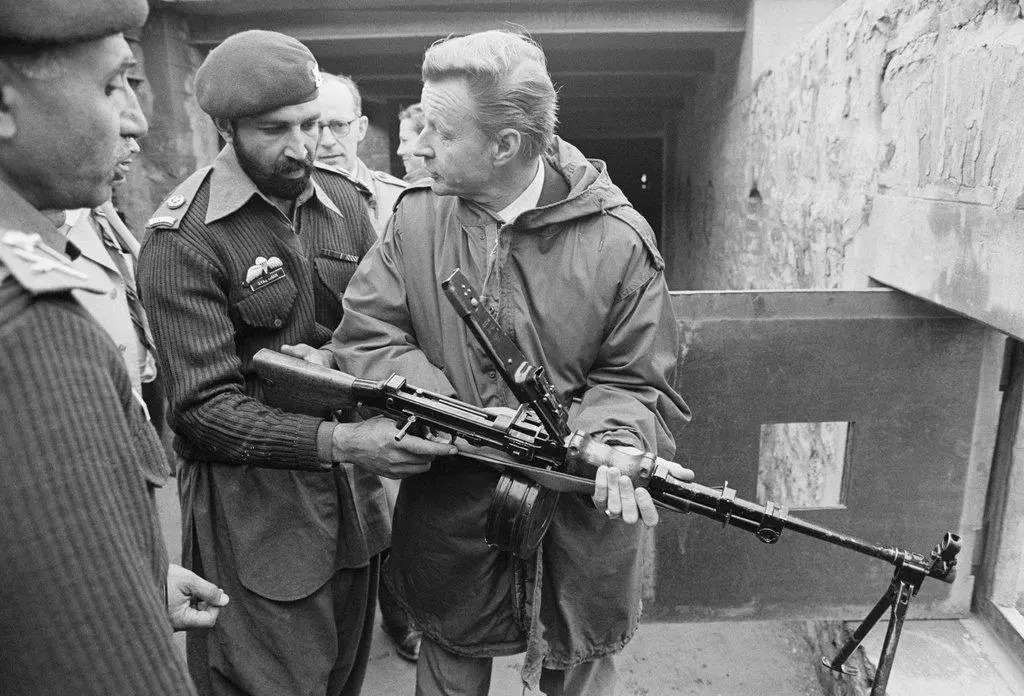
In an opinion piece for The Wall Street Journal entitled “Why the West Should Care About Chechnya,” Brzezinski declared that “the U.S. should not fall for Russia’s entreaty that we are allies against Osama bin Laden.” Even though the USSR no longer existed, and the free market was reinstated in Eastern Europe, Moscow was still not to be trusted. In addition to the ACPC, the Polish-American diplomat lent his expertise to another soft-power cutout which championed the Chechen breakaway movement called the Jamestown Foundation, a neo-con think tank originally set up by former CIA Director William Casey to assist Soviet defectors during the Cold War. Jamestown’s executive board included Michael G. Vickers, the real-life CIA operations officer depicted in the 2007 film Charlie Wilson’s War, who organized weapons shipments to the Afghan mujahideen.
The West began to butt heads with Moscow after the U.S. provided haven to Ilyas Akhmadov, a most wanted “foreign minister” representing the self-proclaimed Republic of Ichkeria, the Chechen separatist government-in-exile. In turn, Great Britain granted political asylum to Akhmed Zakayev, a “culture minister” and plenipotentiary for the almost-state. A former actor, Zakayev duped many naive British leftists into espousing Chechen independence while residing in London, including English film star Vanessa Redgrave (who posted his £50,000 bail) and the U.K. Labour Party’s Jeremy Corbyn. (To be fair, most of the Western left in general got Chechnya embarrassingly wrong.)
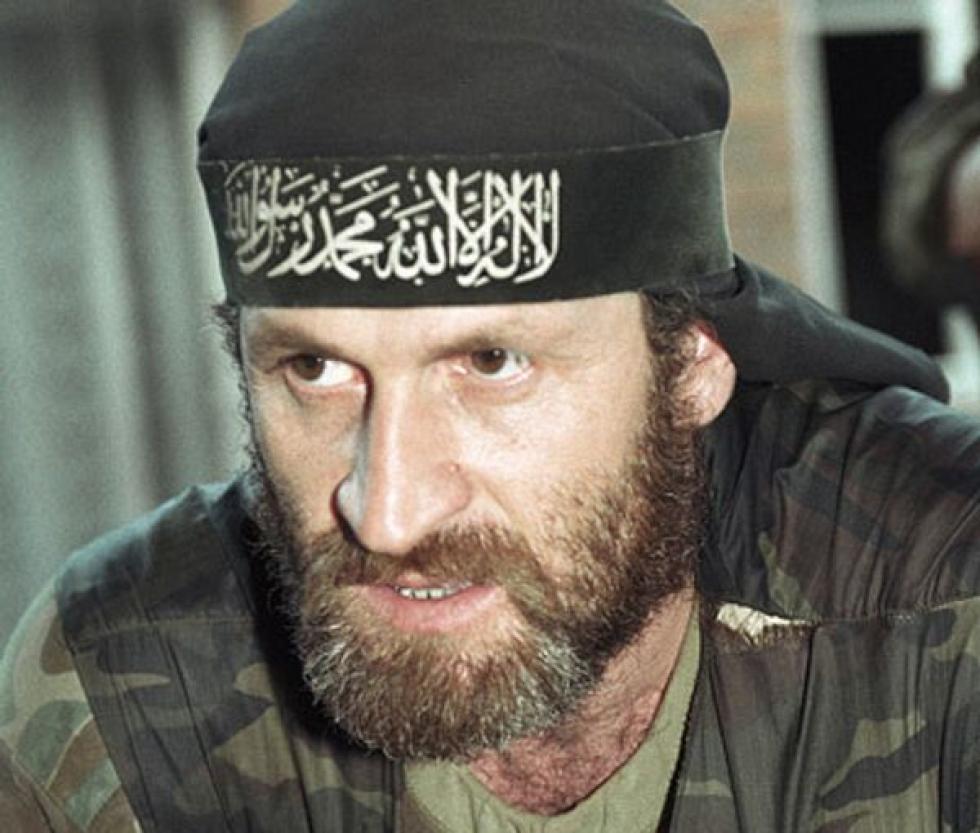
While Zakayev publicly condemned barbaric acts of terror such as the 2002 Moscow Theater and 2004 Beslan school massacres—in which hundreds of innocent Muscovite theatergoers and Ossetian schoolchildren were held hostage by Chechen jihadists—Russia accused the Kazakh-born envoy of complicity in the attacks. Each time Zakayev was taken into custody by INTERPOL after Moscow issued international warrants for his arrest, his extradition was blocked by European governments. Britain similarly rejected Russian requests to hand over Yeltsin-era oligarch Boris Berezovsky, one of the biggest criminal financiers of the secessionists. To this day, Zakayev resides in London where he has recently organized Chechen volunteer militias to fight with the Ukrainian Armed Forces in Donbas.
A 2009 WikiLeaks cable shows that Moscow believed at least one of the Riyad as-Salihin (“brigade of martyrs”) terrorists at Beslan had met with Zakayev in the British capital in advance of the attack. While evidence was not provided, it is entirely possible considering the Ichkerian government subsequently reappointed Shamil Basayev, the self-confessed mastermind of the Beslan and Dubrovka (Moscow) Theater massacres, as deputy prime minister. Nor did the fugitive emissary object to earlier kidnappings such as the imprisonment of more than 2,000 civilians at a Budyonnovsk hospital in 1995 (Zakayev is even pictured attending Basayev’s birthday). On that occasion, Boris Yeltsin yielded to the separatist demands of a Russian withdrawal from the North Caucasus after two failed attempts by Spetsnaz (special forces) at raiding the complex. While the negotiated cease-fire saved the lives of the hostages, it was an ignominious defeat for Moscow that led to Chechnya’s de facto independence and emboldened the increasingly Wahhabist militants to later invade neighboring Dagestan (a cross-border assault heroically resisted by the local population).
Once Putin came to power, the Kremlin would not fall into the same trap—but the West would not reciprocate Moscow’s post-9/11 solidarity when terrorist attacks happened on Russian soil. In a case of pure Western hubris and Monday-morning quarterbacking, the European Court of Human Rights condemned the response by Russia to both the Dubrovka Theater and Beslan school crises over Moscow’s touch-and-go decision to storm the buildings, due to the hundreds of civilian deaths in the ensuing shootouts. (In the auditorium siege, more than a hundred innocent people died by accident from the noxious gas released by Russian authorities attempting to incapacitate the terrorists.) Less criticism was reserved, however, for the United States and its allies nurturing Islamic extremism around the globe in the first place.


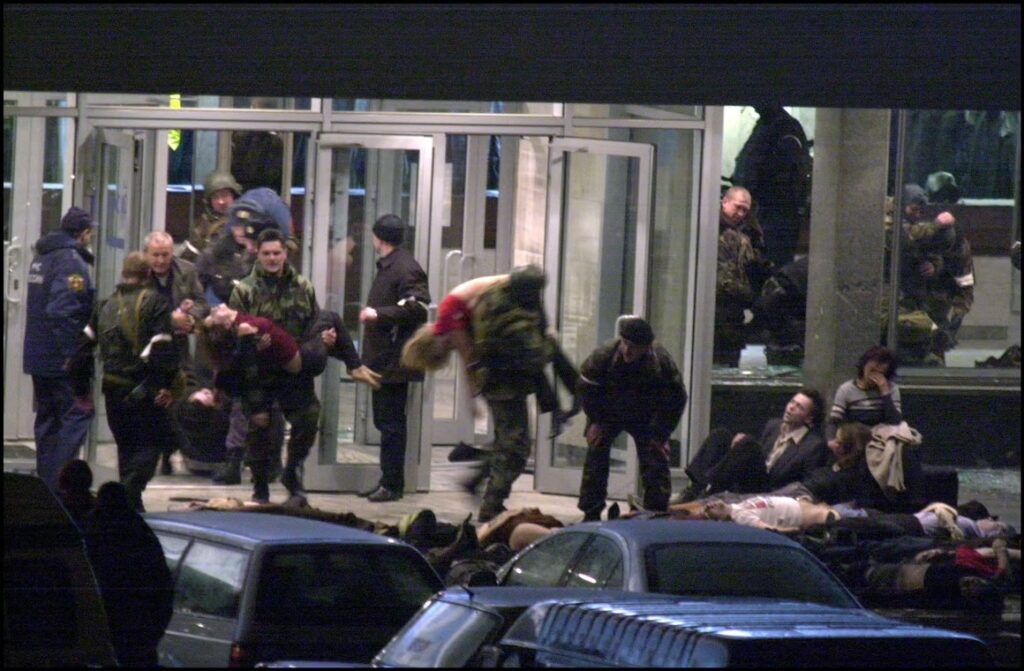
Nationalists like Akhmed Zakayev styled themselves as moderates within the jihadist-dominated movement but, apart from the Kadyrovtsi, there was always a very thin line between the two sides—if there was one at all. Even in the first Chechen war, there were hard-liner Islamist leaders like Zelimkhan Yandarbiyev who performed a balancing act between nationalism and religious zealotry. After fleeing Chechnya when it was besieged by Russian forces in 2000, Zakayev served as the spokesman for Ichkerian President Aslan Maskhadov in Europe. Maskhadov had been one of the main commanders in the Battle of Grozny along with Shamil Basayev and Ibn al-Khattab and was eventually killed by Russia’s Federal Security Service (FSB) in 2005. In the years leading up to his death, Maskhadov visited the U.S. for the purpose of lobbying CIA assistance for the Chechens, but whether he was reciprocated is not publicly known.
Many years later, an intimation regarding that question was given when one of Maskhadov’s closest allies, a Georgian-born ethnic Chechen named Zelimkhan Khangoshvili, was fatally shot in a Berlin park by an FSB operative. The Kist militant had been exiled, living in Germany, when his assassin, Vadim Krasikov, gunned him down in broad daylight. While the Kremlin officially denied any involvement in the 2019 assassination, Krasikov had been sent to avenge the lives of Russian soldiers killed back in 2004 during a jihadist incursion into the bordering mini-republic of Ingushetia. By his own brother’s admission, Khangoshvili took part in the assault led by Basayev in the Ingush capital of Nazran.
Krasikov was arrested and sentenced to life in prison for the hit but was set free in a prisoner swap with Russia last year by the Biden administration. In its write-up on the prisoner exchange, The Grayzone reported that Khanghoshvili had been a full-fledged asset of Georgian intelligence in coordination with the CIA and the Bundesnachtrichtendienst (BND), the Federal Intelligence Service of Germany. It is also understood that, around the time of the Nazran raid, Khangoshvili’s native Pankisi Gorge region had become a breeding ground for Islamist militancy.
After the U.S. invasion of Afghanistan in 2001, there were reports that al-Qaeda had taken refuge in the river valley of the Caucasus Mountains. U.S. Secretary of State Colin Powell even referred to this development in his pre-Iraq invasion address to the United Nations Security Council, claiming that bin Laden’s group was active in the mountainous corridor of Georgia and Chechnya with plans to attack Russia using biological weapons. Unfortunately, Powell mixed this bit of truth with the fiction that Saddam Hussein possessed Weapons of Mass Destruction (WMDs) to sell the Iraq War. Specifically, Powell questionably claimed that Jordanian terrorist Abu Musab al-Zarqawi, later the emir of al-Qaeda in Iraq, was operating in the Pankisi Gorge and manufacturing chemical agents.
A month prior to Powell’s February 2003 speech to the UN, eight Algerian men were arrested in the U.K. by the Metropolitan Police over an alleged plot to release poison gas in the London subway system. General Powell cited this incident in his presentation, but the charges were eventually dropped against all but one of the suspects who fatally stabbed a Met police officer when his flat was raided. It turned out that the initial trace of ricin, which Powell insisted came from Zarqawi via Baghdad, was a false positive—but this would not become public knowledge until long after the U.S. waged war on Iraq.
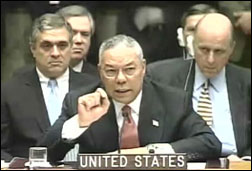
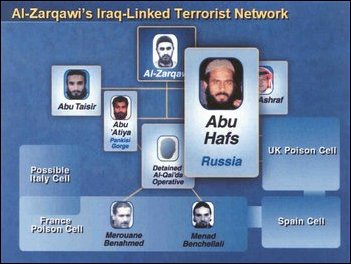
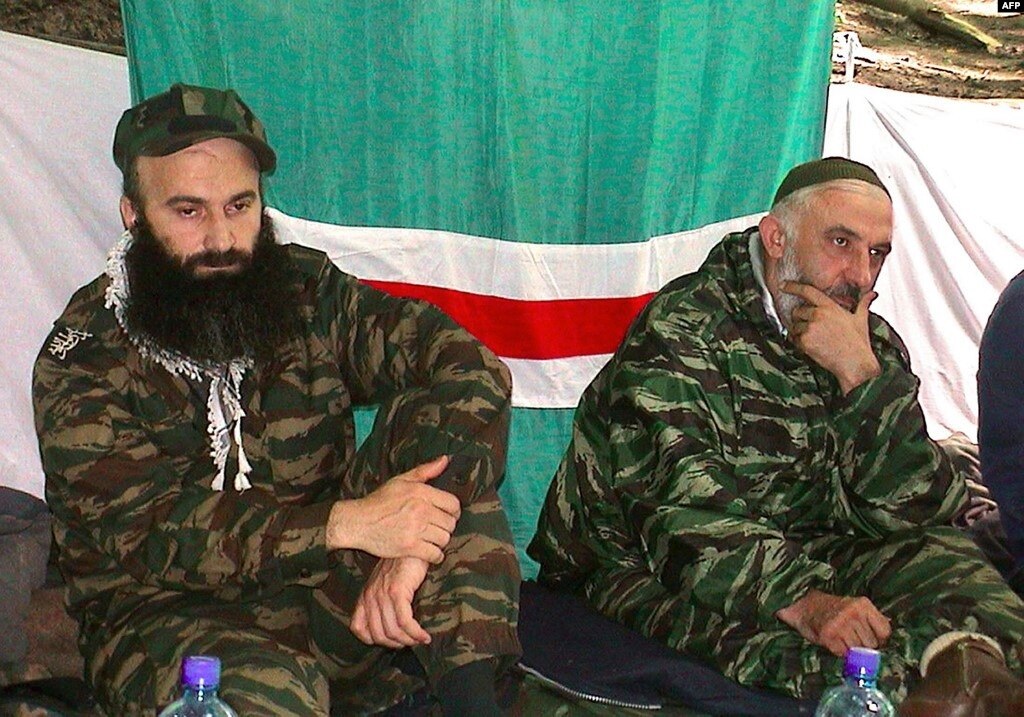
Today, the episode is mostly recalled as an instance of post-9/11 hysteria and a tall tale to sell the Iraq War (which Putin condemned). Porton Down did not find any proof of ricin production in London (only instructions), but the investigation did lead to a raid at the infamous Finsbury Park Mosque where Scotland Yard came across chemical warfare protection suits and other materials used in terror training camps. Not only had the North London Mosque been previously attended by Zacarias Moussaoui, but three of the Beslan school attack plotters had passed through its doors as well, including an Algerian by the name of Kamel Bouralha. At the very moment the Bush administration was using the “U.K. poison cell” as proof of a Zarqawi-Chechen-Pankisi ricin nexus to make the case to invade Iraq, the CIA was busy recruiting Islamic fundamentalists in the lawless region like Khangoshvili as agents.
In late 2005, a mysterious outbreak of poisoning occurred throughout schools in Grozny. After an official inquiry, Russian authorities downplayed the incident as an episode of mass psychosis due to the trauma of being raised in a war-torn region, a well-documented sociogenic phenomenon. Meanwhile, the separatists issued proclamations that the children were victims of biochemical warfare by the Russian military. Even though the terrorists had just abducted 777 Ossete school kids in Beslan the preceding year—packing them half-naked into a sweltering gymnasium rigged with trip-wire explosives—the neo-Cold Warriors in the Jamestown Foundation pointed the finger at Moscow as the more likely culprit behind the illness.
As it did regularly, the neo-con cabal even cited the Kavkaz Center website as a credible source, the online voice of Caucasian jihadist propaganda used by the hostage-takers during the Beslan and Nord-Ost standoffs to take responsibility for the attacks. In the earlier Budyonnovsk raid, Shamil Basayev and his bandits took radioactive cesium from the hospital during their safe passage from Stavropol back to Chechnya before setting the hostages free. Months later, a container filled with cesium was dug up in Moscow’s Izmailovsky Park, with Basayev claiming responsibility and issuing threats to use radiological bombs in the future. None of this prevented Jamestown from continuing to whitewash the Chechen militants and their capabilities.
In the middle of the Beslan crisis, Jamestown even helped spread the unfounded rumor that Novaya Gazeta correspondent Anna Politkovskaya was poisoned by Russian authorities before boarding her flight to North Ossetia to participate in the hostage negotiations. Politkovskaya, who wrote in an editorial for the Los Angeles Times that “it is common knowledge the Russian people are irrational by nature,” was more likely turned away because of her obvious terrorist sympathies that had previously hampered the Dubrovka Theater crisis negotiations in Moscow.
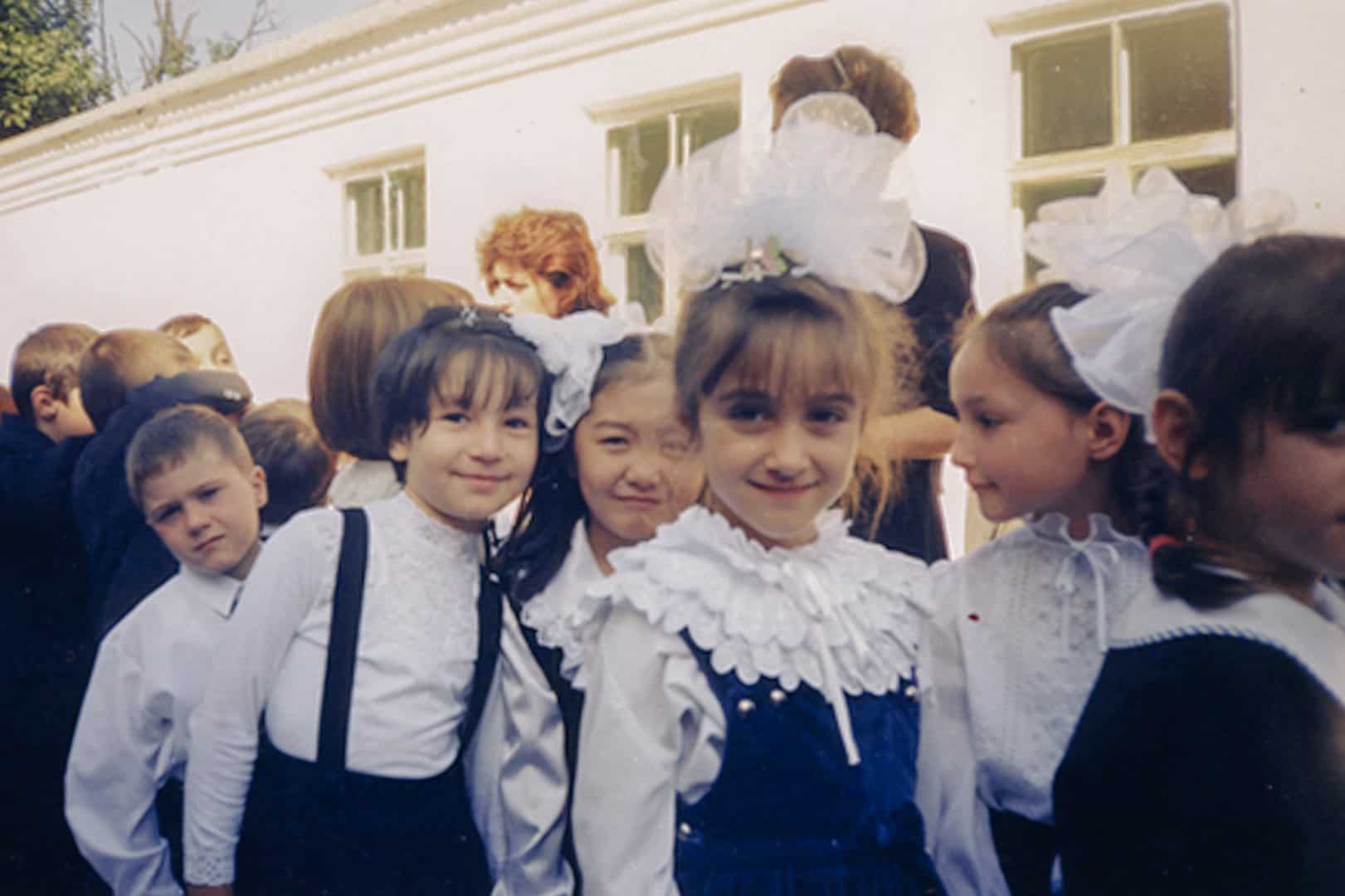
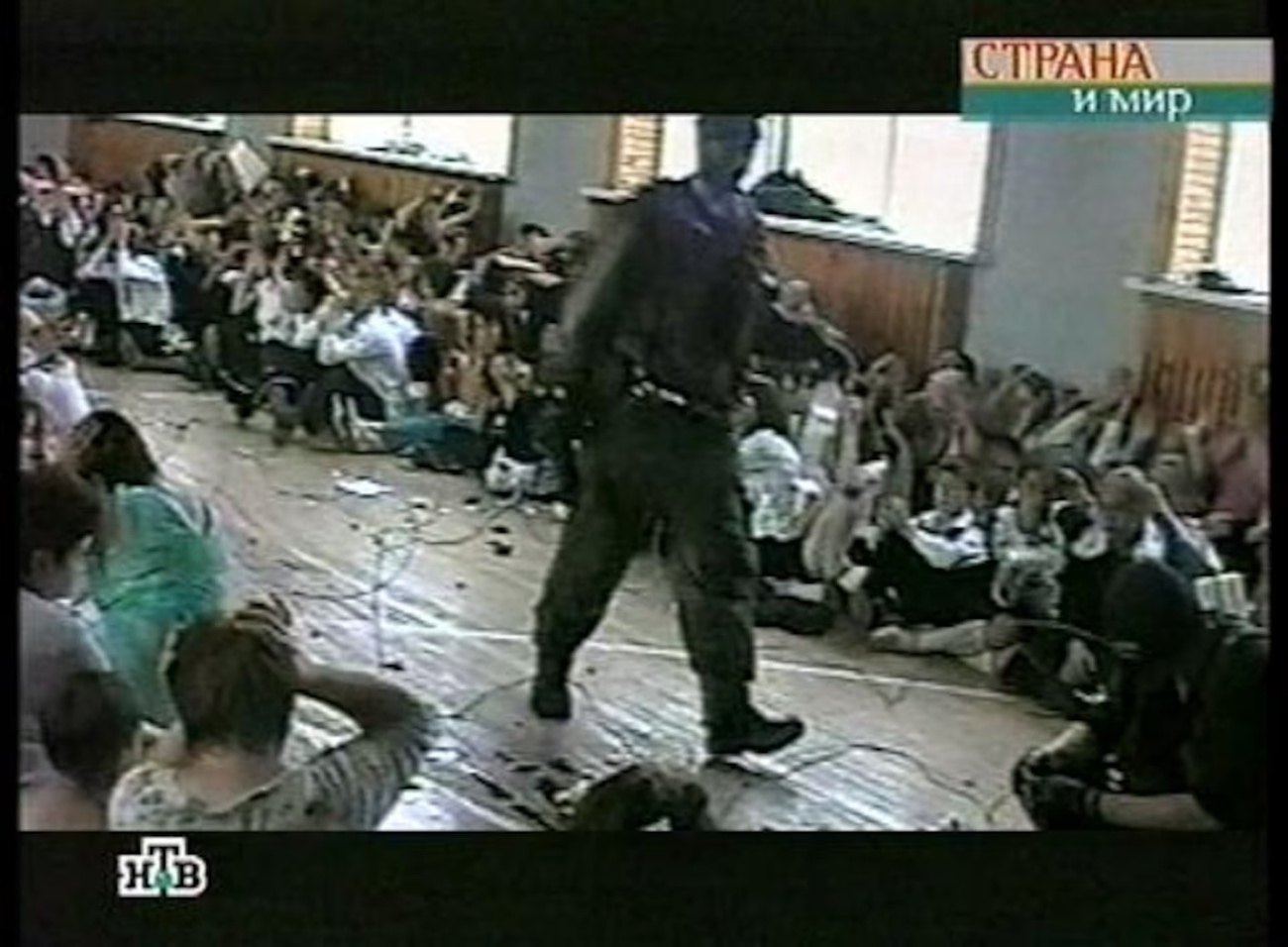
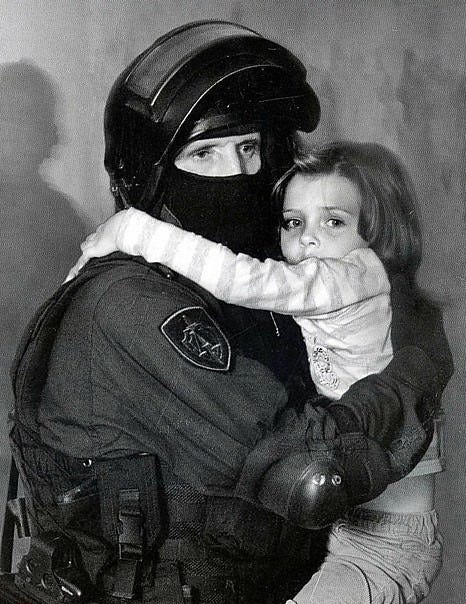

Politkovskaya was one of the main propagandists who fabricated the hoax that Putin had rapidly ascended to the presidency by staging the 1999 Russian apartment bombings as casus belli for the second Chechen war. While it is true that Putin quickly advanced from FSB director to his appointment by Yeltsin as prime minister, Basayev and the Chechens had already invaded Dagestan a month ahead of the blasts that September—there was no further pretext needed for a war already under way.
If Shamil Basayev did not take credit for the series of deadly explosions in Moscow, perhaps it was because he saw the West immediately casting suspicions on the FSB. Up to that point, Western journalists like Carlotta Gall of The New York Times were still soft-pedaling even the most radical Chechen militants like Basayev as freedom fighters for “liberation.” As to the guilty party behind the attacks, Ibn al-Khattab gave an interview to the Associated Press that week issuing threats to bomb Russian cities:
“From now on, we will not only fight against Russian fighter jets (and) tanks… From now on, they will get our bombs everywhere. Let Russia await our explosions blasting through their cities. I swear we will do it.”
Kremlin critic and filmmaker Andrei Nekrasov promulgated the canard that Putin and the FSB secretly carried out the apartment bombings in his exploitative 2004 documentary Disbelief. In more recent years, Nekrasov underwent a political epiphany during the making of his brilliant 2016 film, The Magnitsky Act: Behind the Scenes, in which he investigates the 2009 death of shady Russian tax lawyer Sergei Magnitsky. Initially, Nekrasov buys into the narrative that the tax adviser was murdered in custody by Russian police, only to discover it to be a lie perpetrated by Magnitsky’s former cohort, corrupt American financier Bill Browder. A grandson of U.S. Communist Party leader Earl Browder, the oligarch-in-exile made millions off Yeltsin’s privatization of the Russian economy using Magnitsky’s services before he was deported to the U.K. and banned from the country. Suddenly, everything Nekrasov believes about Putin comes into question and the movie delves into deeper, overarching themes exploring the nature of propaganda. In hindsight, one wonders if Nekrasov has since reconsidered his pre-suppositions about the apartment bombings.
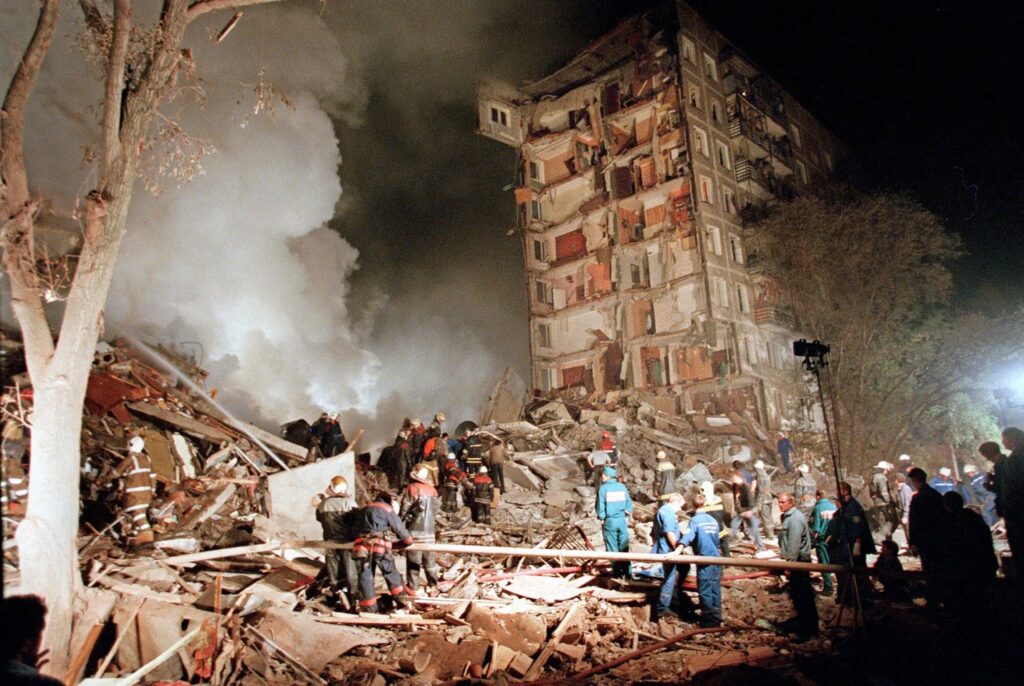
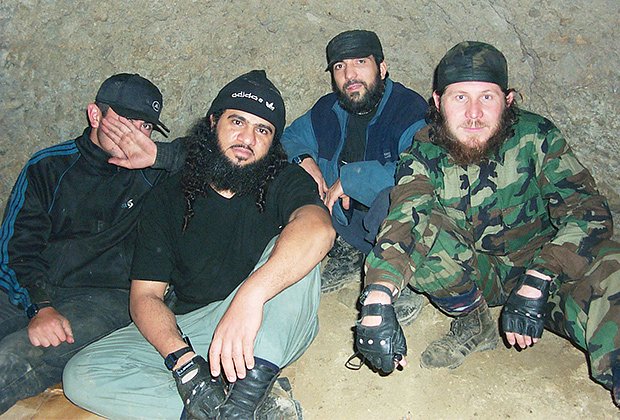
Around that time, U.S.-Russia relations had begun to fray when Washington’s priorities shifted to decoupling the vast energy resources in the Caspian Sea from Moscow. This was reflected in remarks by then-Halliburton CEO Dick Cheney, who told a gathering of oil industry executives, “I cannot think of a time when we have had a region emerge as suddenly to become as strategically significant as the Caspian.” Concurrently, three former Warsaw Pact countries—Poland, Hungary and the Czech Republic—joined NATO, antagonizing the Kremlin. The Russian financial system had completely collapsed under Yeltsin, who had become an embarrassment to the Clinton administration, which helped him steal the 1996 election from the Communist Party. Yeltsin only further fell out of favor with Washington when he dared to criticize the NATO bombing of Serbia.
Then, suddenly, a relatively unknown (and sober) ex-KGB officer came to the fore. It is no coincidence that the ACPC was simultaneously started by Zbigniew Brzezinski out of the offices of Freedom House, the oldest CIA front group inside the Beltway. Upon the start of the second Chechen war, the Warsaw-born Russophobe also co-created the North Caucasus Weekly propaganda newsletter for the Jamestown Foundation in cooperation with ACPC. In his 1997 book The Grand Chessboard, Brzezinski highlighted the geo-strategic importance of wresting Chechnya away from Russia:
“For centuries the definition of Russian national greatness was equated with the acquisition of territory, and even at the end of the twentieth century, the Russian insistence on retaining control over such non-Russian people as the Chechens, who live around a vital oil pipeline, has been justified by the claim that such control is essential to Russia’s status as a great power.”
The Jamestown Foundation later briefly came to attention in the wake of the 2013 Boston Marathon bombings when it was discovered that one of the accused Chechen bombers had attended seminars in Georgia run by a group associated with the think tank. The Moscow-based Izvestia newspaper broke the story that deceased suspect Tamerlan Tsarnaev was present at workshops in Tbilisi run by the Caucasus Fund of Georgia, an NGO affiliated with Jamestown. The FSB had alerted the FBI in 2011 about the first-born Tsarnaev brother’s terror-related travels in Dagestan, but the feds never officially detained him (though his mother said otherwise and insisted her sons were patsies).
Even more suspicious were the ties between the Tsarnaev family and a high-ranking U.S. intelligence official who, as luck would have it, was the CIA Station Chief in Kabul on the eve of Operation Cyclone. The uncle of the Tsarnaev siblings, Ruslan Tsarni, had been married to the daughter of Graham Fuller, the Chief of Station in the Afghan capital back in 1978.
On top of that, “Uncle Ruslan” incorporated a group called the Congress of Chechen International Organizations which shared an address in Maryland with that of Fuller’s home. Not only did Tsarni’s organization send money and materials such as mine-resistant footwear, uniforms and other accoutrements to the Chechen mujahideen, court records show it did so in coordination with a curious Saudi-created “charity” called the Benevolence International Foundation (BIF).
In 2002, that purported charitable trust was shut down by the U.S. Treasury Department after it was determined to be a front for al-Qaeda and a sponsor of global terrorism. This is as close to a smoking gun showing a direct line from a CIA operative to the separatists by way of a bin Laden-related financial scheme.

Court documents reveal BIF managed the deliveries of anti-mine boots, X-ray machines and miscellaneous paraphernalia to the Chechens through an Azerbaijan-based representative of Hezb-e-Islami, the Islamist group founded by Afghan mujahideen veteran and notorious drug lord, Gulbuddin Hekmatyar. In the Afghan-Soviet war, Hekmatyar’s narco-terrorist militia was one of the biggest recipients of CIA funding and Stinger missiles in Operation Cyclone.
The racketeering indictment of BIF also specifies weapons shipments to mujahideen elements in the Balkans. In a sweep of the Sarajevo branch of Benevolence International by Bosnian police, a document was unearthed revealing the identities of the wealthy Saudi plutocrats bankrolling Osama bin Laden, nicknamed the “Golden Chain.”
An article in the American private intelligence newsletter Stratfor (otherwise referred to as the “shadow CIA”) notes:
“Chechnya posed its biggest threat to Russia’s internal security during the Chechen wars of 1994-1996 and 1999-2004. Saudi Arabia, the United States and Turkey—all of whom had a vested interest in keeping Russia heavily preoccupied after the fall of the Soviet Union—helped fuel these wars by providing support to the Chechen rebels. Saudi Arabia in particular led this effort by implanting the Wahhabist doctrine and providing financing, arms, supplies, guerrilla training and moral support to Chechen militants. The bulk of Saudi support to the Chechens was funneled in through charities and humanitarian aid in the region.”
Another report by Stratfor states:
“After the September 11th attacks, Washington made huge efforts to clamp down on Muslim charities raising money for Islamist militants fighting U.S. forces but did much less to curb fundraising for Chechen militants. Among the foundations and groups in the United States suspected of raising money for Chechen militants are the American Committee for [Peace in] Chechnya, Chechen Relief Expenses, International Relief Association, Islamic Relief Worldwide and Islamic Circle of North America.”
Just one of many fake charities raising money for the Chechens, Ruslan Tsarni raised funds for his organization while living in the home of a life-long U.S. intelligence operative. Graham Fuller first became known for his involvement in the Iran-Contra affair during the Reagan administration and, more recently, for being the suspected CIA handler of the late Fethullah Gülen, a Muslim preacher self-exiled in Pennsylvania sought by the Turkish government over an abortive military coup. Ankara also claims the Gülen movement was behind the assassination of Andrei Karlov, the Russian Ambassador to Turkey, in 2016.
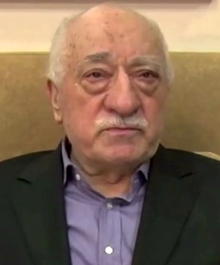
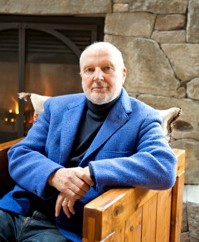
At the close of a long career at the CIA and the State Department, Fuller became a policymaker at the DoD-funded RAND Corporation. In 1999, he wrote a chilling op-ed in the French newspaper Le Monde Diplomatique rationalizing the use of Islamist groups for Western foreign policy interests. In French journalist Richard Labévière’s book Dollars for Terror: The United States and Islam, Fuller is quoted in an interview that same year:
“The policy of guiding the evolution of Islam and of helping them against our adversaries worked marvelously well in Afghanistan against the Red Army. The same doctrines can still be used to destabilize what remains of Russian power…”
According to renowned whistleblower and former FBI translator Sibel Edmonds in Paul L. Williams’ book Operation Gladio: The Unholy Alliance Between the Vatican, the CIA, and the Mafia:
“Without the Cold War excuse, our foreign policymakers had a real hard time justifying our joint operations and terrorism schemes in the resource rich ex-Soviet states with these same groups, so they made sure they kept their policies unwritten and unspoken, and considering their grip on the mainstream media, largely unreported. Now what would your response be if I were to say on the record, and, if required, under oath: Between 1996 and 2002, we, the United States, planned, financed, and helped execute every major terrorist incident by Chechen rebels (and the Mujahideen) against Russia. Between 1996 and 2002, we, the United States, planned, financed, and helped execute every single uprising and terror related scheme in Xinjiang (aka East Turkistan and Uyghurstan).”

Edmonds was fired in 2002 for blowing the whistle on widespread misconduct at the Bureau and gagged by Justice Department under the “State Secrets privilege.” While many assumed the gag order was over her exposure of FBI foreknowledge of 9/11, Edmonds claimed it had more to do with her classified knowledge via counterintelligence investigations regarding a NATO/CIA covert operation in the Caucasus and Central Asia using Islamist radicals to destabilize Russia and China (which has its own Islamic terrorism problem with Uyghur secessionists).
Dubbed “Gladio B,” militants were allegedly recruited through the cult-like Gülen movement, as well as the Grey Wolves, a fascist paramilitary organization that was previously part of Counter-Guerrilla, the Turkish branch of NATO’s original Operation Gladio. (The Grey Wolves acquired notoriety in the 1980s when a former member attempted to assassinate Pope John Paul II). Gülen, who died last year, was able to secure residence in the U.S. partly because Graham Fuller wrote a reference letter to the FBI on his behalf.
Fuller may have even had a hand in introducing Ibn al-Khattab into the conflict. The go-between in the Congress of Chechen International Organizations transaction with bin Laden’s shell company was a militant and radical cleric known as Sheikh Fathi Shishani. According to a separate indictment of the co-defendants in the Jose Padilla “dirty bomb” case, Shishani was a Jordanian-Chechen “preacher of violent jihad,” a “military commander in the violent jihadist movement in Chechnya,” and a “major conduit for providing material support to the Chechen rebels.” Fathi had also previously fought in Afghanistan where he is said to have helped recruit Khattab to join Shamil Basayev’s insurgency in the Caucasus.
As was the case with most of the Chechen leaders, Basayev was raised in Kazakhstan where his family had been deported at the end of the Second World War. One of the primary grievances of the separatists in the Russo-Chechen conflict dates to the controversial decision by Stalin to expel large sections of the ethnic Vainakh population to Soviet Kazakhstan and Central Asia.
Like several other national minorities in the USSR, the Chechens and Ingush were banished over wartime collaboration with the Germans when the Nazis invaded the Soviet Union. While the mass deportations might have been excessive, for the record, there was a collaborationist insurgency in the North Caucasus led by the Chechen nationalist Hasan Israilov that fought alongside the Axis powers against their Soviet compatriots.

On the 60th anniversary of the expulsions in February 2004, the European Parliament ruled that the forced transfer of the Chechens and Ingush constituted an act of “genocide,” one of many politicized resolutions Brussels has passed against Russia that rewrite World War II history (leaving aside the absurdity that the Georgian-born Stalin was himself from the Caucasus, not Russia). Adopted just months before the carnage at Beslan, Moscow had no choice but to perceive the EU measure as an expression of sympathy for the terrorists. The fact that Akhmad Kadyrov was targeted for assassination on Victory Day and the Dubrovka Theater in Moscow was ambushed during a performance of Nord-Ost, a World War II-themed musical production, was not by chance.
As part of the de-Stalinization thaw in the late 1950s, Soviet Premier Nikita Khrushchev authorized many of the expelled Chechens to repatriate. Despite resentment over their collective punishment, the diverse peoples of the Caucasus lived together harmoniously for decades until the socialist federation was ripped apart thanks to the counter-revolutionary reforms that reawakened nationalism within the Soviet sphere.
If there is any source of blame for the war, it was the deliberate encouragement of ethno-nationalism by Mikhail Gorbachev who continuously made false promises of statehood to the Chechens as the USSR was crumbling. Unlike other subjugated nations in the “prison of peoples” comprising the former Russian Empire, the Chechens—who were so culturally backwards the local marriage tradition consisted of bride kidnapping—were never bestowed self-rule by the Bolsheviks. However, they were guaranteed representation by the constitution in the Soviet of Nationalities chamber until Gorbachev’s “restructuring” (perestroika) of the historic policy unleashed nationalist demands and gave rise to ethnic disputes, arguably a major cause of communism’s demise.
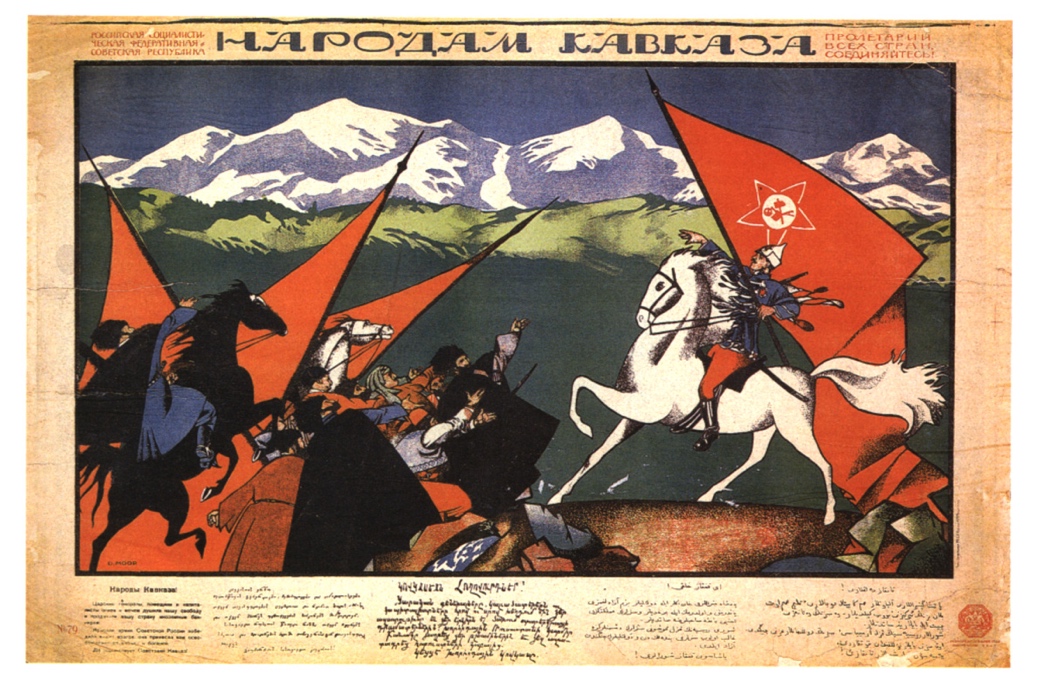
The CIA used tribal Islamists in Afghanistan to lure the USSR into a Vietnam-esque quagmire that was another significant factor in its collapse. With over 20 million Muslims inhabiting the Russian Federation, the West then began to focus on stirring up secessionist and religious fanatics internally to balkanize the Motherland and prevent Moscow from ever returning to the world stage, an ambition shared by the likes of Dick Cheney and other foreign policy mandarins. That is, until Vladimir Putin came to power and derailed their plans. Like Libya before it, the tragedy now unfolding in Syria would almost surely have occurred in Chechnya if an Islamist principality had been carved out in the Caucasus.
American and European economic hitmen had already ransacked the Russian economy under Boris Yeltsin with loans-for-shares privatization schemes to create an oligarch class. If the Chechen holy war had succeeded in separating the southernmost portion of Russia, it would have joined the collection of ex-Soviet lands under NATO occupation whose untapped natural resources are exploited by foreign capital. One of the USSR’s greatest accomplishments was to address the national question in the context of capitalism where true self-determination meant putting an end to class exploitation as well. As the leader of the nascent Russian state birthed out of the traumatic transition from socialist property relations to free enterprise, Putin’s temporary solution is limited to treatment of the symptom and not the root cause. Only when the heterogenous masses of the former Soviet Union are reunified in a fundamental political transformation can they fully surmount the divide-and-conquer tactics of Western imperialism.
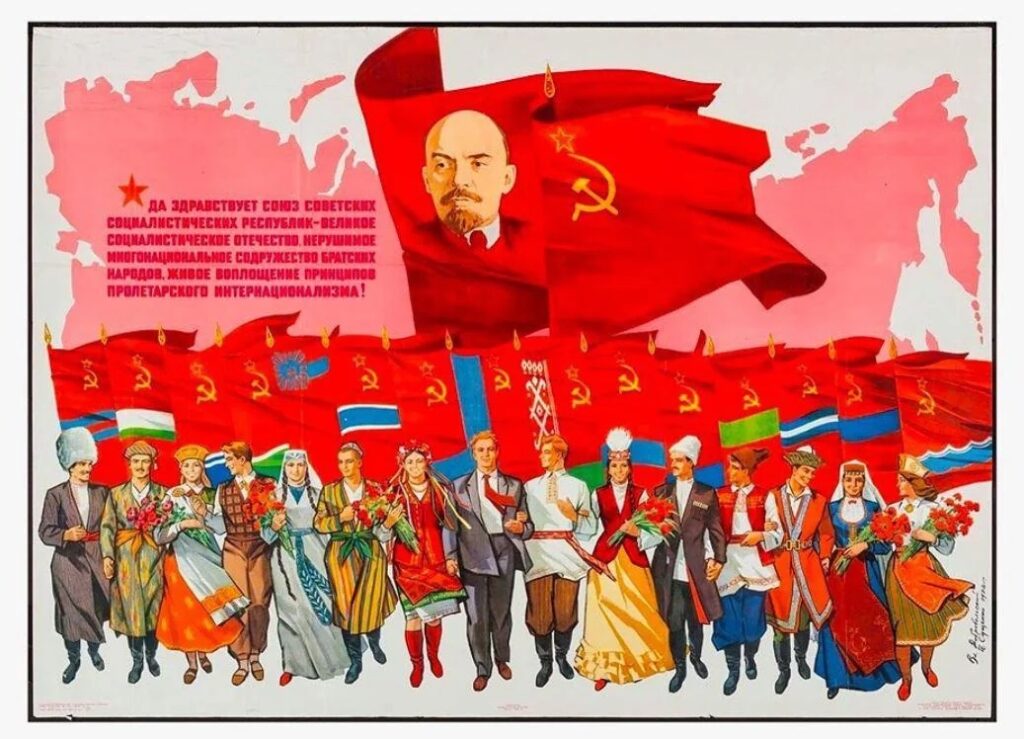

CovertAction Magazine is made possible by subscriptions, orders and donations from readers like you.
Blow the Whistle on U.S. Imperialism
Click the whistle and donate
When you donate to CovertAction Magazine, you are supporting investigative journalism. Your contributions go directly to supporting the development, production, editing, and dissemination of the Magazine.
CovertAction Magazine does not receive corporate or government sponsorship. Yet, we hold a steadfast commitment to providing compensation for writers, editorial and technical support. Your support helps facilitate this compensation as well as increase the caliber of this work.
Please make a donation by clicking on the donate logo above and enter the amount and your credit or debit card information.
CovertAction Institute, Inc. (CAI) is a 501(c)(3) non-profit organization and your gift is tax-deductible for federal income purposes. CAI’s tax-exempt ID number is 87-2461683.
We sincerely thank you for your support.
Disclaimer: The contents of this article are the sole responsibility of the author(s). CovertAction Institute, Inc. (CAI), including its Board of Directors (BD), Editorial Board (EB), Advisory Board (AB), staff, volunteers and its projects (including CovertAction Magazine) are not responsible for any inaccurate or incorrect statement in this article. This article also does not necessarily represent the views the BD, the EB, the AB, staff, volunteers, or any members of its projects.
Differing viewpoints: CAM publishes articles with differing viewpoints in an effort to nurture vibrant debate and thoughtful critical analysis. Feel free to comment on the articles in the comment section and/or send your letters to the Editors, which we will publish in the Letters column.
Copyrighted Material: This web site may contain copyrighted material the use of which has not always been specifically authorized by the copyright owner. As a not-for-profit charitable organization incorporated in the State of New York, we are making such material available in an effort to advance the understanding of humanity’s problems and hopefully to help find solutions for those problems. We believe this constitutes a ‘fair use’ of any such copyrighted material as provided for in section 107 of the US Copyright Law. You can read more about ‘fair use’ and US Copyright Law at the Legal Information Institute of Cornell Law School.
Republishing: CovertAction Magazine (CAM) grants permission to cross-post CAM articles on not-for-profit community internet sites as long as the source is acknowledged together with a hyperlink to the original CovertAction Magazine article. Also, kindly let us know at info@CovertActionMagazine.com. For publication of CAM articles in print or other forms including commercial internet sites, contact: info@CovertActionMagazine.com.
By using this site, you agree to these terms above.
About the Author
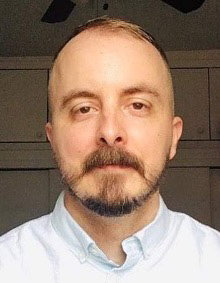
Max Parry is an independent journalist and geopolitical analyst based in Baltimore.
His writing has appeared widely in alternative media and he is a frequent political commentator featured in Sputnik News and Press TV. He also hosts the podcast “Captive Minds.”
Max can be reached at maxrparry@live.com.

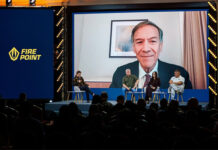
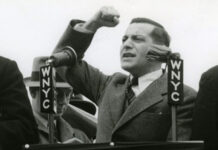
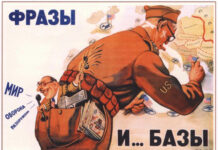
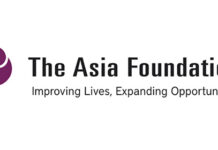
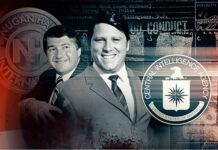


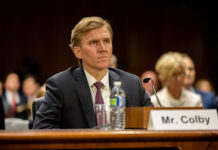
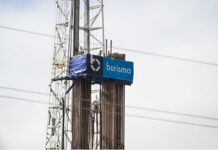

Traitorous Russia is to blame for the destruction of Syria because it sold it to the fraud Trump for parts of Ukraine.
https://www.globalresearch.ca/silent-genocide-ethnic-cleansing-taking-place-right-now-in-syria/5885863
“While the extent to which the so-called “moderate rebels” in Syria have tempered their extremism is highly questionable (as the recent mass killings of Alawites and Christians attest)…”
Why do you think, dear readers, that Yolani and Trump want to return Chechens and Uyghurs from Syria to their homelands?
https://strategic-culture.su/news/2025/04/04/goodnight-syria-and-good-morning-china-erdogan-chinese-uyghurs-run-riot-in-syria-and-beyond/
The Chinese and Russians will pay for the betrayal of the communist Alawites.